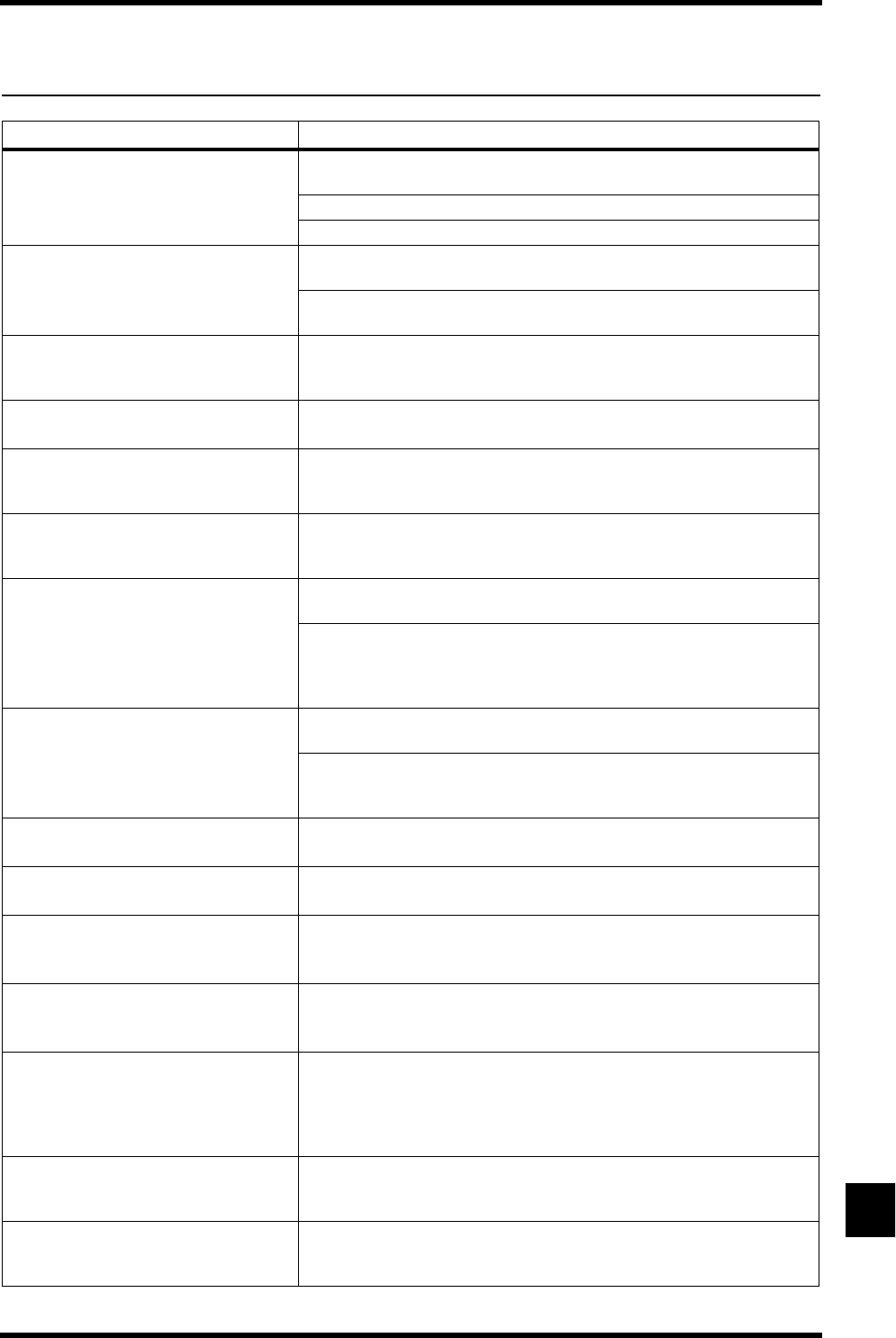
251
03D—Owner’s Manual
Troubleshooting
Symptom Advice
The 03D cannot be turned on!
Make sure that the power cord is connected to a suitable AC wall out-
let.
Make sure that the 03D POWER switch is set to the ON position.
If you still cannot turn on the 03D, contact your Yamaha dealer.
Input channel signal level is very low!
Make sure that the GAIN control and PAD switch (channels 1 to 8) are
set correctly. See Gain and Pad on page 37.
Use the Meter pages to check the levels. See Metering on page 79 for
more information.
The faders do not adjust levels as
expected!
Make sure that you have selected the correct fader mode and mixing
layer, and that the MIDI Remote function is turned off. See Mixing
Layer on page 31 for more information.
[ON] buttons and [SEL] buttons
select the wrong channels!
Make sure that you have selected the correct mixing layer. See Mixing
Layer on page 31 for more information.
Input signals are present but the
display meters show nothing!
Make sure the Meter mode is not set to GAIN REDUCTION, which dis-
play the amount of gain reduction by the dynamics processors. See
Metering on page 79 for more information.
Input signals are present but the
stereo output is dead!
Raise the ST OUT fader and make sure that the ST OUT [ON] button is
on. Make sure that the channels are routed to the stereo output. See
Stereo Pan, Balance & Routing on page 59 for more information.
Input signals are present but the
monitor output is dead!
Make sure that the MONITOR OUT SOLO/2TR IN switch is set to
SOLO. See Two-track Input on page 77 for more information.
Make sure that the MONITOR OUT control is turned up, and that on
the Moni.Setup page the MONI TRIM control is turned up and a moni-
tor source is selected. See Monitoring on page 74 for more informa-
tion.
Solo mode is selected but nothing
can be heard!
Make sure that the MONITOR OUT SOLO/2TR IN switch is set to
SOLO. See Two-track Input on page 77 for more information.
Make sure that the MONITOR OUT control is turned up, and that on
the Solo Setup page the SOLO TRIM control is turned up. See Using
Solo on page 76 for more information.
In Mixdown Solo mode, some
channels are heard all the time!
Are these channels set as solo safe channels? See Solo Safe on page 77
for more information.
Signals from input channels 1 and 2
cannot be heard!
Is there an external processor that is turned off connected to the insert
jacks?
Channels seem to run out of
headroom, especially when EQ boost
is applied!
Use the Attenuator function on the EQ page to reduce the level. See
Attenuator on page 38 for more information.
A signal is connected to the ST IN
analog input jacks but it doesn’t
appear on the ST IN channel!
Make sure the input source for the ST IN is set to ANALOG on the D.in
Setup page. See Digital Stereo In on page 221 for more information.
An AES/EBU signal is connected to
the DIGITAL STEREO IN connection
but cannot be heard!
Make sure that DIGITAL STEREO IN is set to AES/EBU, and that the DIG-
ITAL STEREO IN signal is routed to either the ST IN channel or STEREO
CASCADE, and that the CASCADE is turned ON. All these settings are
made on the on the D.in Setup page. See Digital Stereo In on page 221
for more information.
Recordings made via the DIGITAL ST
OUT or YGDAI sound grainy!
Make sure that the Dither function is set to match the wordlength of
the recording device. See Output Dither on page 220 for more infor-
mation.
Signals connected via the DIGITAL ST
IN or YGDAI sound noisy!
Make sure that the device sending these signals is synchronized to the
master wordclock. See Wordclock Setup on page 216 for more infor-
mation.


















